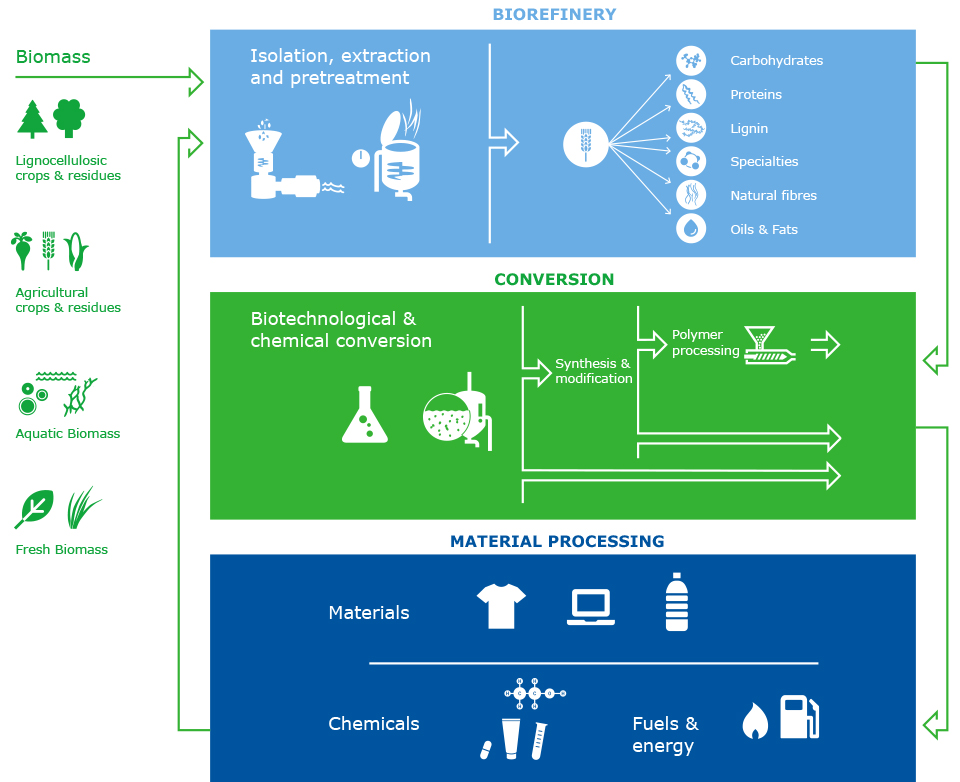Bio-based products are wholly or partly derived from materials of biological origin, excluding materials embedded in geological formations and/or fossilised. Some of the reasons of the increasing interest in bio-based products lay in their benefits in relation to depletion of resources and climate change. Bio-based products could provide additional product functionalities, less resource intensive production and efficient use of all natural resources. In industrial processes, enzymes are used in the production of chemical building blocks, detergents, pulp and paper, textiles, etc. By using fermentation and bio-catalysis instead of traditional chemical synthesis, higher process efficiency can be obtained, resulting in a decrease in energy and water consumption, and a reduction of toxic waste. As they are derived from renewable raw materials such as plants, bio-based products can help reduce CO2 and offer other advantages such as lower toxicity or novel product characteristics (e.g. biodegradable plastic materials).
The bio-based products market was identified as a lead market by the European Commission’s Lead Market Initiative. The Lead Market Initiative aimed to support the up-take of a series of specific sectors by using policy instruments such as regulation, public procurements, standardization and other supporting activities, in order to lower barriers to bring these new products into the market.

1. Adhesives
2. Construction materials and composites
3. Fibers, paper, and packaging
4. Fuel additives
5. Landscaping materials, compost, and fertilizer
6. Lubricants and functional fluids
7. Plastics
8. Paints and coatings
9. Solvents and cleaners
10. Sorbents
11. Plant and vegetable inks

“2.3 trillion Euro turnover and 18.5 million employees in the European Bioeconomy in 2015 – Continuous increase of 10% since 2008”
In 2016, a study conducted by nova-Institute on behalf of the Bio-based Industries Consortium showed for the first time which macroeconomic effects are generated by these activities, e.g. turnover, employment etc. for the years 2008 and 2013. This study has now been updated with data for 2014 and 2015. The data show an increase in the biobased share of the chemical industry in the EU28 from 6% in 2008 to 7% in 2015. The raw materials used by the chemical industry are about 50% organic and about 50% inorganic. Only taking the organic part into account, the overall bio-based share increased from 12% in 2008 to 15% in 2015. The study shows that odoriferous substances for the food or drink industries dominate in terms of bio-based production value while animal or vegetable fertilizers dominate in terms of production volume.he data show an overall slight increase in the bio-based share of the chemical industry in the EU-28 from about 6% in 2008 to 7% in 2015.
